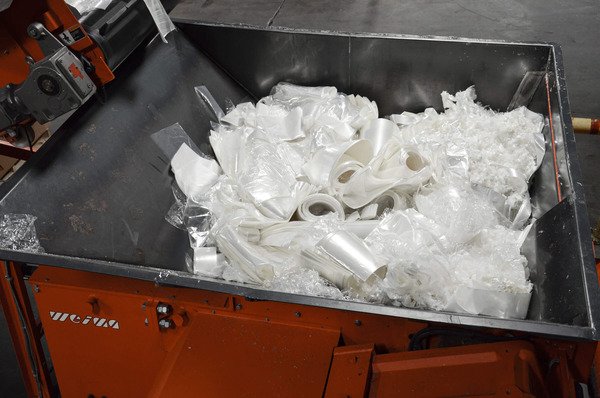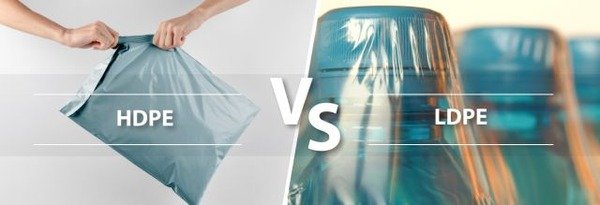
Placing plastic bags in your curbside recycling bin may seem like the right thing to do, but it can actually disrupt recycling operations1. Here's why.
Plastic bags should not go in standard curbside recycling bins2. Their lightweight, flexible design causes them to tangle in sorting machines3, leading to shutdowns and safety hazards. Instead, plastic bags must be recycled through designated drop-off bins4, typically found at grocery and retail stores.
Bag-making equipment manufacturers, such as BagMec®, have direct experience with these materials. Recycling facilities use rotating screens and conveyors to sort items by size and weight. Rigid materials like bottles and cans are easily separated, while flexible bags behave unpredictably, often wrapping around mechanical parts and forcing repeated shutdowns.
Each shutdown requires manual intervention to remove tangled bags—wasting time, increasing costs, and posing risks to workers. Despite good intentions, putting plastic bags in curbside recycling bins leads to significant problems. Store drop-off bins provide a separate, dedicated collection stream that avoids these issues.
What Happens If You Put Plastic Bags in the Recycling Bin?
Placing plastic bags in curbside bins sets off a series of negative consequences.
Plastic bags clog sorting machinery and contaminate other recyclable materials, which can result in entire batches being sent to the landfill instead of being processed.

The Journey of a Misplaced Plastic Bag
Once a plastic bag enters a recycling facility, its light weight often causes it to mix with paper. As it moves through the sorting system, the bag wraps around rotating shafts and screens—a process known as "tangling." A single bag can quickly lead to multiple tangles, requiring shutdowns to clear the machinery.
Contamination and Its Consequences
Beyond mechanical issues, plastic bags also contaminate bales of sorted materials. Paper and cardboard bales must be nearly pure to be sold. If plastic bags are present, the bales are often rejected by buyers, as the plastic can melt and damage equipment during processing. Rejected bales are typically diverted to landfills, even if most of the material is recyclable.
The Economic Impact on Recycling Facilities
The costs of plastic bag contamination are widespread:
| Consequence | Description | Financial Impact |
|---|---|---|
| Machine Downtime | Entire sorting lines stop while tangled bags are removed. | Hundreds of lost processing hours annually. |
| Increased Labor | Workers must manually remove tangled materials. | Higher labor costs for facilities and municipalities. |
| Rejected Bales | Buyers reject contaminated paper or cardboard bales. | Lost revenue from otherwise valuable recyclables. |
| Equipment Damage | Machinery wears out faster due to repeated tangling. | Higher maintenance and repair expenses. |
Manufacturers like BagMec® approach this as a design challenge—developing machines that support recyclable and biodegradable materials5 to aid the transition toward a circular economy6.
Why Are Some Plastics Recyclable and Others Not?
Not all plastics are treated equally in recycling systems. The recyclability of a plastic item depends on its resin type and form.
Plastic type and shape determine how it is processed. Rigid plastics like bottles are compatible with curbside recycling; flexible films like plastic bags are not.

Understanding Resin Identification Codes (RICs)
The numbers within recycling symbols—1 through 7—indicate plastic types. Plastic bags are generally made from #2 (HDPE) or #4 (LDPE) plastics.
| Code | Name | Common Bag Types | Curbside Recyclable? |
|---|---|---|---|
| #2 | High-Density Polyethylene | Grocery bags, retail bags, T-shirt bags | No (as bags) |
| #4 | Low-Density Polyethylene | Bread bags, produce bags, dry cleaning bags | No |
Even though a #2 plastic milk jug is recyclable, a #2 plastic bag is not—due to its form. Sorting systems are designed for rigid materials, not flexible films. This is why plastic film7 must be collected separately through store drop-off programs.
The Importance of a Clean Stream
Effective recycling depends on proper sorting. Mixing different materials—especially flexible plastic with paper—lowers the value and usability of the recycled product. When processed separately, plastic films can be recycled into new bags, composite lumber, or park benches. Misplacing them in the curbside bin interferes with this system.
Innovation in Materials and Machinery
Manufacturers like BagMec® design machines for HDPE and LDPE materials with high precision. Equipment such as the T-Shirt Bag Making Machine or Wicketer Bread Bag Machine processes these materials efficiently. Other machines, like the Lamination Pouch Making Machine, handle more complex multilayer films, which are harder to recycle.
To address recyclability challenges, BagMec® partners with brands developing compostable and biodegradable alternatives. Their machines are being adapted to work with materials like PLA, supporting more sustainable packaging solutions.
How Can Plastic Bag Recycling Be Improved?
While the recycling system for plastic bags is still evolving, progress is being made. Collaboration between consumers, manufacturers, and recyclers is key.
Improving plastic bag recycling starts with reducing usage, reusing bags when possible, and recycling them through proper store drop-off channels.

1. Reduce and Reuse First
Minimizing single-use plastic bag consumption is the most effective step. Bags should be reused for shopping, storage, or lining trash cans. Recycling is the last resort, not the first.
2. Use Store Drop-Off Bins
Dedicated collection bins at retail stores are the correct way to recycle plastic films.
Items accepted at store drop-off bins include:
- Grocery and retail bags
- Bread bags
- Dry cleaning bags
- Produce bags
- Plastic shipping envelopes (labels removed)
- Plastic overwrap from bottled water or paper towels
Ensure all materials are clean and dry before dropping them off.
3. Support a Circular Economy
Manufacturers can play a key role in improving plastic sustainability by:
- Reducing Energy Use: Utilizing energy-efficient servo motors in machinery to cut power consumption.
- Minimizing Waste: Implementing precision technologies like Smart Tension Control to reduce scrap.
- Enabling Future Materials: Designing machines compatible with recycled and compostable plastics.
BagMec® is actively developing technologies that support recyclable and biodegradable films—helping create packaging systems that close the loop and reduce environmental impact.
Conclusion
Do plastic bags go in recycling? Technically, yes—but not through curbside bins. They require a specialized recycling stream. By using store drop-off bins and supporting innovations in material handling, plastic bags can be recycled responsibly and efficiently.
-
Explore how recycling operations work to better understand the importance of proper material sorting. ↩
-
Learn how to use curbside recycling bins effectively to avoid contamination and improve recycling rates. ↩
-
Gain insights into the technology behind sorting machines and their role in recycling. ↩
-
Find out where to recycle plastic bags properly to avoid disrupting recycling operations. ↩
-
Discover the benefits of biodegradable materials in reducing plastic waste. ↩
-
Learn about the circular economy and its role in promoting sustainable practices. ↩
-
Understand the reasons behind the exclusion of plastic film from curbside recycling. ↩






